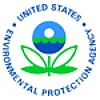In the latest federal legislative move to try to force the EPA to take quicker action than contemplated by the agency’s PFAS Roadmap of 2021, a bill was recently introduced in the House that would require the EPA to set air emission limits for all PFAS under the Clean Air Act. PFAS air regulations are something that advocates concerned about PFAS pollution issues beyond just drinking water have advocated for in the past few years. There are barriers, though, to achieving the desired results even if the legislation passes. Nevertheless, the federal legislative activity underscores the need for all companies that are currently using PFAS in their manufacturing or industrial processes to understand the full scope of compliance needs when and if PFAS air regulations become a reality.
House Bill For PFAS Air Regulations
On March 17, 2022, a bipartisan group in the House introduced the “Prevent Release Of Toxics Emissions, Contamination, and Transfer Act of 2022” (also known as the PROTECT Act of 2022 or HR 7142). The aim of the bill is to require the EPA to list all PFAS as hazardous air pollutants (HAPs) under the Clean Air Act. If passed, the designation as HAPs would require the EPA to develop regulatory limits for the emission of PFAS into the air.
The proposed steps, however, go well beyond the EPA’s own plan for potential PFAS air regulations as detailed in the EPA’s PFAS Strategic Roadmap 2021. In the PFAS Roadmap, the EPA indicates that it commits to performing ongoing investigation to:
- Identify sources of PFAS air emissions;
- Develop and finalize monitoring approaches for measuring stack emissions and ambient concentrations of PFAS;
- Develop information on cost-effective mitigation technologies; and
- Increase understanding of the fate and transport of PFAS air emissions to assess their potential for impacting human health via contaminated groundwater and other media pathways.
The EPA committed to using this information and data in order to, by the Fall of 2022, “evaluate mitigation options”, which could include listing “certain PFAS” as HAPs. However, the EPA also indicated that it might use other regulatory or non-regulatory tools to achieve results similar to formal PFAS air regulations under the Clean Air Act.
The bill, therefore, would considerably accelerate the EPA’s process for potential HAPs, which in turn could result in legal challenges to any rushed HAPs, as the EPA would not have had the opportunity to collect all necessary data and evaluate the soundness of the science behind any HAP designation.
Impact On Business
Any designation of PFAS as HAPs under the Clean Air Act will of course immediately impact companies that are utilizing PFAS and emitting PFAS into the air. While it remains to be seen whether the PROTECT Act will pass, if it were to pass and the EPA’s HAP designations were to survive any legal challenges, the impacts on businesses would be significant. Companies would need to undertake extensive testing of air emissions to determine their risk of Clean Air Act violations, which will be complicated due to limitations on current technology to do this type of testing. Companies may also need to pivot their production practices to reduce or limit PFAS air emissions, which would add unplanned costs to balance sheets. Finally, companies may wish to explore substitutes for PFAS rather than navigate Clean Air Act regulatory compliance, which is a significant undertaking that takes time and money.
It is also worth noting that a designation as a HAP for any PFAS would also trigger significant regulatory challenges to businesses that might have nothing to do with air emissions. Any substance listed as a HAP under the Clean Air Act is automatically designated as a “hazardous substance” under CERCLA (the Superfund law). Once a substance is classified as a “hazardous substance” under CERCLA, the EPA can force parties that it deems to be polluters to either cleanup the polluted site or reimburse the EPA for the full remediation of the contaminated site. Without a PFAS Superfund designation, the EPA can merely attribute blame to parties that it feels contributed to the pollution, but it has no authority to force the parties to remediate or pay costs. The designation also triggers considerable reporting requirements for companies. Currently, those reporting requirements with respect to PFAS do not exist, but they would apply to industries well beyond just PFAS manufacturers. Superfund site cleanup costs can be extensive, even as high as hundreds of millions of dollars, depending on the scope of pollution at issue and the amount of territory involved in the site.




 Yesterday, the
Yesterday, the